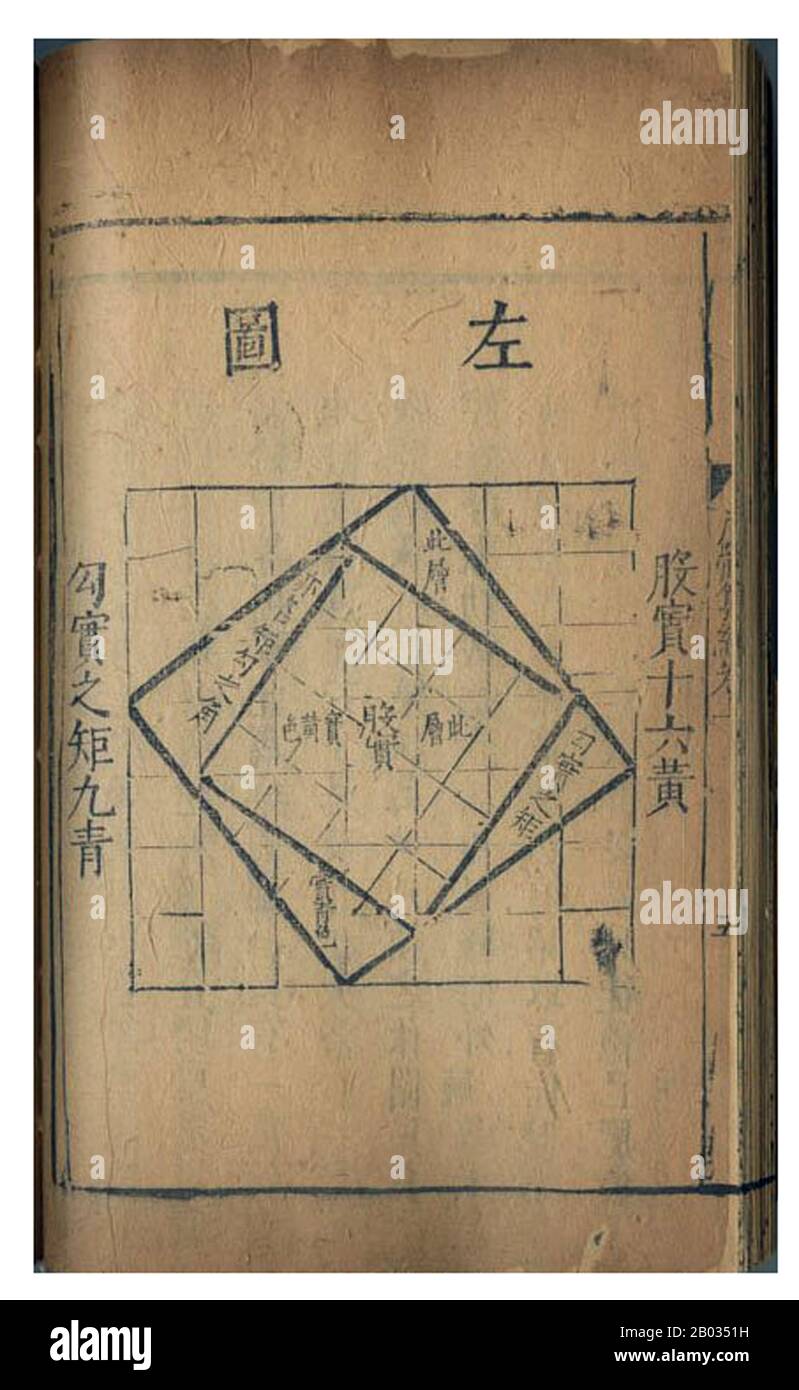'The Nine Chapters on the Mathematical Arts' is a Chinese mathematics book, composed by several generations of scholars from the 10th–2nd century BCE, its latest stage being from the 2nd century CE. This book is one of the earliest surviving mathematical texts from China. It lays out an approach to mathematics that centres on finding the most general methods of solving problems, which may be contrasted with the approach common to ancient Greek mathematicians, who tended to deduce propositions from an initial set of axioms. Entries in the book usually take the form of a statement of a proble

Image details
Contributor:
CPA Media Pte Ltd / Alamy Stock PhotoImage ID:
2B0351HFile size:
47.7 MB (874.3 KB Compressed download)Releases:
Model - no | Property - noDo I need a release?Dimensions:
3200 x 5206 px | 27.1 x 44.1 cm | 10.7 x 17.4 inches | 300dpiDate taken:
28 September 2016Photographer:
Pictures From HistoryMore information:
This image could have imperfections as it’s either historical or reportage.
'The Nine Chapters on the Mathematical Arts' is a Chinese mathematics book, composed by several generations of scholars from the 10th–2nd century BCE, its latest stage being from the 2nd century CE. This book is one of the earliest surviving mathematical texts from China. It lays out an approach to mathematics that centres on finding the most general methods of solving problems, which may be contrasted with the approach common to ancient Greek mathematicians, who tended to deduce propositions from an initial set of axioms. Entries in the book usually take the form of a statement of a problem, followed by the statement of the solution, and an explanation of the procedure that led to the solution. These were commented on and advanced by the scholar by Liu Hui in the 3rd century CE.